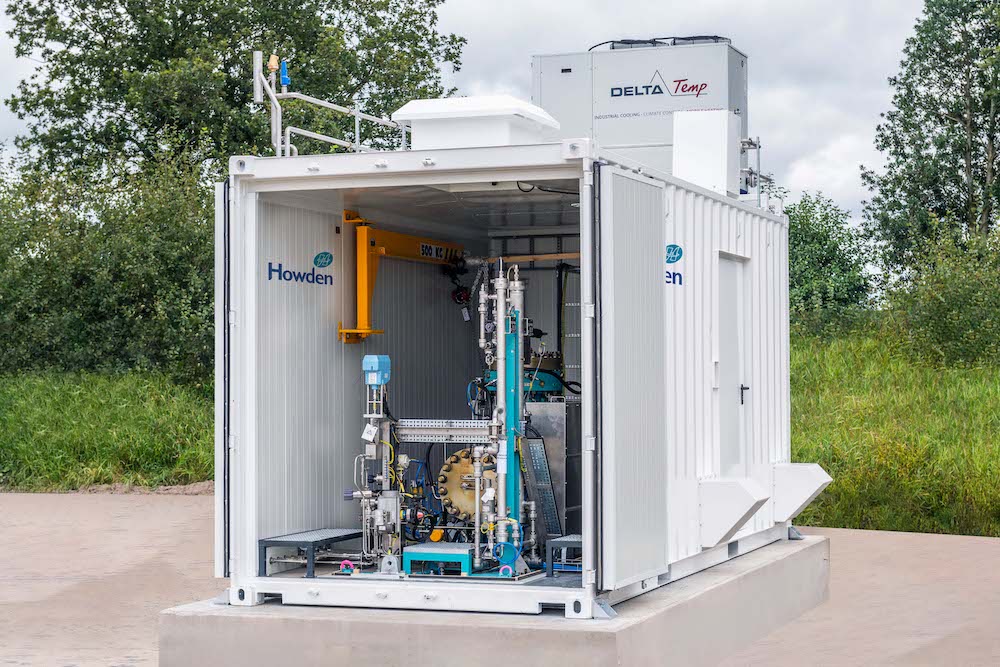Power-to-X: Enabling a secure energy system
Today we see worldwide adoption and acceleration of electricity being generated from renewable sources. According to IEA, by 2026 global renewable electricity capacity is forecast to rise more than 60% from 2020 levels to over 4800 GW – equivalent to the current total global power capacity of fossil fuels and nuclear combined. Recent innovations, stronger support from government policies, ambitious clean energy goals from COP26 as well as successful industry leading decarbonisation pilot projects, are driving the deployment of renewables.
However, numerous economic and heavy industries and processes such as heating, transport and industrial processes still to date predominately depend of fossil fuels and will inevitably have to adapt to environmentally and climate friendly energy sources. Power-to-X (PtX) can facilitate compatibility and application of renewable energies for these industries and processes and play a role in accelerating the energy transition.
Turning power into hydrogen
Renewable PtX is emerging as a key enabler to support the reduction of carbon emission and solve another of the energy transition’s biggest hurdles: storage. Excess power that is generated from renewable sources may become disconnected from the grid to prevent overloading if there is too much power generated. A route for excess power could be directed and used to split water into oxygen and hydrogen, through electrolysis. Hydrogen production through water electrolysis is an attractive approach since it leads to the production of a sustainable fuel that can be used directly in hydrogen fuel cells or to reduce carbon dioxide across industries. Cost-effective hydrogen storage is necessary to support the continued implementation of hydrogen in current and future industrial applications, including transportation, portable and stationary power.
Hydrogen storage for the world’s first fossil-free steel plant
Projects large and small will be necessary for a worldwide shift to more renewables in the energy mix. Howden has already delivered solutions on all scales, including the delivery of a hydrogen storage compression solution for HYBRIT, the world’s first fossil-free steel plant, in Svartöberget, Sweden. A joint project between Sweden’s SSAB, LKAB and Vattenfall, HYBRIT is the deployment of a unique pilot project which will replace coke and all the fossils fuels required to produce steel with green hydrogen from water electrolysis using renewable solar or wind power. This initiative leads the development of the world’s first fossil-free value chain for the iron and steel industry, to address renewable hydrogen storage.
For this particular project, Howden was contracted to supply a high-pressure diaphragm compression package to seamlessly integrate the storage cycle of the hydrogen production. This offers a cost-effective solution, with the necessary pressure required, to store large amounts of energy in the form of hydrogen.
A sustainable future
Energy is one of the most vital necessities for human survival and therefore, making this energy transition happen, and quickly, is critical. At the moment, with rising energy demand and consumption globally, high costs are the largest barrier facing PtX for large scale production and integration with other technologies. Renewable hydrogen pricing is at least two times more expensive than hydrogen generated from fossil fuels therefore, most hydrogen is still produced from this source.
However, the possible economic benefits of renewable PtX is becoming acknowledged by governments and industry, particularly by those that are at the forefront of global decarbonisation efforts. For PtX production to be truly climate neutral and socially and economically beneficial, regulatory support, technological advances and economies of scale must apply from the start and ensure long term investment security for PtX systems. By turning renewable electricity into fuel, power-to-X could free transport, heating and industrial process from fossil fuels.


- Publication – WORLD POWER TO X SUMMIT’S MAGAZINE – JUNE 2022
- Author – Salah Mahdy, Global Director Renewable Hydrogen at Howden
- Word count 598 words
